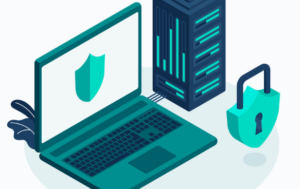
Unveiling the Power of Firewalls
In the digital age, where data breaches and cyber threats are on the rise, protecting your digital assets is paramount. Enter the firewall – a robust security tool that forms the first line of defence against cyberattacks. In this comprehensive blog post, we’ll unveil the power of firewalls, exploring what they are, how they work, and why you need one. From understanding the different types of firewalls to implementing best practices, you’ll gain the knowledge and insights to safeguard your digital fortress effectively.

The Guardian at the Gate
Imagine the firewall as the vigilant guardian at the gate of your digital network, monitoring and filtering incoming and outgoing network traffic. This network security device or software acts as a gatekeeper, making decisions on which data packets to allow through and which ones to block, all based on a set of predetermined security rules.
Understanding Firewall Types
Firewalls come in various types, each designed for specific security needs. These include packet-filtering firewalls, stateful inspection firewalls, proxy firewalls, and application-layer firewalls. To choose the right firewall for your needs, you must understand these types and their unique features.
How Firewalls Work
To appreciate the significance of firewalls, it’s essential to grasp how they operate. Firewalls inspect network traffic based on predefined rules, examining data packets for suspicious or malicious content. They monitor factors such as IP addresses, port numbers, and packet content to make real-time decisions on whether to permit or deny traffic.
Protecting Against Unauthorized Access
Unauthorized access is one of the primary concerns in the digital realm. Firewalls safeguard your network by preventing unauthorized users or malicious entities from gaining access. By acting as a gatekeeper, they ensure that only legitimate and authorized connections are established.
Shielding Your Data
Data protection is critical, especially in an era when data breaches can have severe consequences. Digital shields play a pivotal role in shielding your data from unauthorized access and exfiltration. They examine the data that enters and exits your network, ensuring that sensitive information remains confidential.
Defending Against Cyber Threats
Cyber threats, such as malware, viruses, and ransomware, are constantly evolving. Digital shields are equipped to detect and block these threats in real time. With the right configuration and regular updates, firewalls provide a robust defence against the latest cyberattacks.
Enforcing Security Policies
A well-configured firewall enforces security policies that align with your organization’s requirements. These policies define the rules for traffic flow, application usage, and user access. By adhering to these policies, your network remains compliant and secure.
The Importance of Regular Updates
Firewalls require regular updates to stay effective. Cyber threats evolve, and so should your firewall’s security rules and definitions. Updates ensure that your firewall remains equipped to defend against new and emerging threats.
Beyond the Firewall: A Holistic Security Approach
While firewalls are essential, they are not the sole solution for network security. A comprehensive security strategy includes other elements, such as intrusion detection systems, antivirus software, and employee training. A layered security approach provides maximum protection against the diverse array of cyber threats.
Conclusion
In the age of digital warfare, the importance of firewalls cannot be overstated. They serve as your fortress’s first line of defense, protecting your network, data, and assets from malicious entities. By understanding the types, functionality, and importance of firewalls, you can bolster your cybersecurity measures and safeguard your digital world.
Remember, the best defense is a layered one. While firewalls play a pivotal role, they should be integrated into a holistic security strategy that includes regular updates, employee awareness, and a proactive stance against ever-evolving cyber threats.



